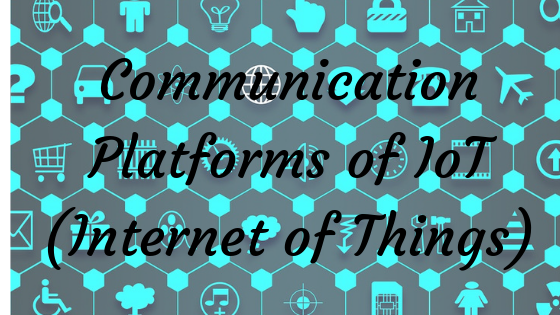When it comes to IoT (Internet of Things) connectivity is the primary key. There are many options available when we talk about the different connections and protocols used in the Internet of Things. There are also several communication protocols discussed before such as Bluetooth, Wi-Fi, Radio Frequency and others.
There will be an enormous number of choices when it comes to connecting the Internet of Things (IoT) such as satellite, cellular, RFID and even Ethernet. Let’s discuss other platforms of protocols used in the Internet of Things.
Radio Frequency Identification (RFID)
This is a communication protocol that is used to track and identify wireless devices. It is considered as a simple method of communication that can be used for a broader range of different applications. How can RFID connect with IoT? Devices use an auto ID technology which is also known as RFID tag for a particular object to having its identification. With the help of RFID, it allows things or devices to be recognized by the system or computer. This is used widely by businesses and makes it efficient in tracking different things. The RFID tags can help detect and tell what the applications are, where they are or if someone has moved those things.
Near Field Communication (NFC)
Somehow similar to Radio Frequency Identification (RFID) however if you will to investigate on these two, you will notice that many things differentiates the two. Devices that are NFC enabled can communicate data from one device to another by tapping the devices together. This protocol is the one used in smartphones and is used in a short-range method of communication but is considered as the most systematic protocol.
Thread
Thread is another communication protocol used in the Internet of Things (IoT). This protocol consumes a small amount of power; it is also reliable and allows M2M communication or machine to machine communication. This type of IoT protocol was designed for connecting home applications. Thread
Thread can be considered as one of the latest IoT protocols. It is designed for home automation applications. This design is complimenting the Wireless Fidelity (Wi-Fi) at homes. It is a low power wireless mesh networking platform that enables the device to devise communication.
Data Distribution Service (DDS)
DDS or Data Distribution Service is an expandable, high-performance and real-time machine to machine communication (M2M). With the help of DDS, transferring data to devices and cloud platforms is a lot easier. It can be referred to as the most flexible protocol as it can manage and can connect broad and high-performance sensor networks.
The Internet of Things has a goal of making lives through automation. In homes, it transforms people’s lives by creating devices that help people make their task easy. In businesses, it provides efficiency, automation, functionality, and the likes.
True enough, there are many protocols out there, and whenever choosing the right protocol, one thing is sure. You need to review each protocol to make sure which is which. When choosing for the protocol to use, no one fits all; however, by knowing these simple definition about the different protocols, IoT developers can discover the suitable solution for each need whether its business or individual.

